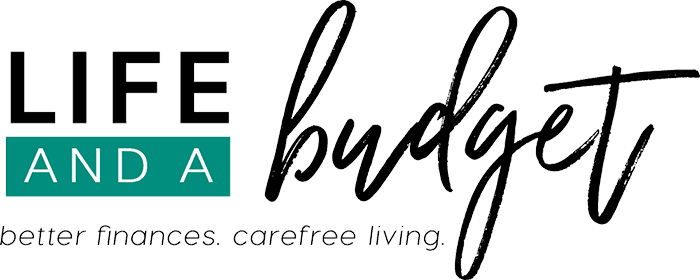 The burden of student loan debt isn’t going away anytime soon for many Americans. Unfortunately, I am included in this number with $80,000 worth of student debt hanging over my head. According to recent studies, approximately 40 million Americans have $1.2 trillion in student loans. Sadly, 1 out of 4 of these borrowers is dealing with the consequences of delinquency or default on their loans.
The burden of student loan debt isn’t going away anytime soon for many Americans. Unfortunately, I am included in this number with $80,000 worth of student debt hanging over my head. According to recent studies, approximately 40 million Americans have $1.2 trillion in student loans. Sadly, 1 out of 4 of these borrowers is dealing with the consequences of delinquency or default on their loans.
The only way to reverse this increasing trend is to focus on sustainable strategies that will help current student loan borrowers get out of debt and prevent future college students from borrowing more than they can reasonably afford to pay back after graduation. Student loan debt must be paid back regardless of postgraduate outcomes and borrowers need solutions. Today, let’s discuss what you need to know to tackle your student loan debt.
Know Your Student Loan Debt
Do you know how much student loan debt you have? If not, this is the very first step you need to take when working on paying off your loans. You have to know what you’ve gotten yourself into to create a strategy to get out of debt.
If you know who your lender is, you more than likely can go to their website and sign up for an account where all the information regarding your student loans are located. If you have loans at multiple lenders, you can visit the National Student Loan Data System. Regardless of how many lenders you have, this database contains student loan information from schools, the Direct Loan Program, and Department of Education Programs.
After you’ve gathered your loan information, you can use it to determine the total cost of your debt. Figure out the minimum monthly payment for each loan, the interest rate, the types of loans you have, and the payoff date. Once you know this information, you can determine if your current repayment plan will be effective in helping you pay back your loan.
Your Repayment Options
Standard Repayment – The most common repayment plan is the standard repayment program. This is for Direct and/or Federal Subsidized and Unsubsidized loans, PLUS loans, and consolidated loans. Payment amounts are fixed and span a ten-year repayment period, up to 30 years for consolidated loans. Under this plan, you will pay the least amount in interest over time.
Graduate Repayment – This repayment plan is for Direct and/or Federal Subsidized and Unsubsidized loans, Plus loans, and consolidated loans. Payment amounts are lower initially and gradually increase. Payments are made over the course of a ten-year repayment period, up to 30 years for consolidated loans. With this repayment option, you will pay more over the life of the loan than you would under the standard repayment plan.
Extended Repayment – This plan is for Direct and/or Federal Subsidized and Unsubsidized loans, PLUS loans, and consolidated loans. You can choose either standard or graduated repayment options for a repayment term of up to 25 years. With this option your payment will be lower; however, you will pay more in interest than you would under a standard repayment. To qualify you must have more than $30,000 in Direct loans or FFEL (Federal Family Education Loan)
Income-Driven Repayment – In addition to these repayment plans, there are other payment options for individuals with income sensitivities. These four plans are Revised Pay as You Earn (REPAYE), Pay as You Earn (PAYE), Income Based Repayment, and Income Contingent Repayment. These plans were created to make payments more manageable through reduced payments determined by your income. If you have federal loans and want to use one of these options, you must apply for consideration.
For information on income-sensitive repayment options available to you, visit Federal Student Aid. You will find information on how student loan payments are calculated under each plan, plan requirements, and other resources to determine if these plans are right for you.
Consolidate or Refinance Your Loans
Consolidation
If you have more than one student loan provider or you want your loans to have one single, low-interest rate — you may want to consider consolidation. A direct loan consolidation allows you to combine multiple federal loans into one loan. This will give you one single payment to focus on instead of paying multiple lenders different amounts.
Most consolidations will lower your monthly payment, can extend your repayment up to 30 years, gives you other repayment options, and changes your interest rate from a variable to fixed rate. With these benefits, you risk losing some benefits offered by your original lender such as loan cancellation benefits, principal rebates, or interest rate discounts. Also, by extending the life of your loan, you will pay more in interest.
Refinance
If you can comfortably afford a standard or graduated repayment plan, you might also consider student loan refinancing. You can refinance your federally owned and other private student loans into one private student loan with a low-interest rate. You have the option to extend your repayment period and lower your monthly payment or you can refinance into repayment terms as short as five years.
There are a few things to consider before refinancing your student loans. Consider how much money you would actually be saving. If you want to pay off your loans quickly as possible to reduce the amount of interest paid, this option may be attractive to you.
You can only refinance student loans with private companies. You may have seen ads for SoFi during March Madness or during the Super Bowl. SoFi is one of the larger banks offering student loan refinancing. Make sure that you do your research before refinancing.
If you think you may need to utilize any federal repayment options in the future such as income-based repayment plans, you may want to reconsider. When you refinance, you lose these types of repayment options along with student loan forgiveness programs offered by the federal government.
If you already know that you want to refinance your student loans, I recommend checking out Lendkey. There you can compare competitive interest rates without hurting your credit score. Plus, you could save thousands over the life of your loan. Compare rates here today.
Consider Payoff Strategies
Debt Avalanche
If you choose to use the debt avalanche repayment strategy, you would make the minimum payment on your student loans. Any additional payment you gather for the month would be used to contribute to loans with the highest interest rate. The idea here is to pay off the most expensive debt first.
For example, let’s say you have a student loan in the amount of $2,000 with a minimum monthly payment of $80.00. This loan has a 6.8 percent interest rate. Your second student loan is $1,300 with a minimum payment of $50 and an interest rate of 6.0 percent.
This example would give you a combined monthly minimum student loan payment of $130. If you had an additional $100 to contribute towards your student loan, you would contribute this amount to the $2,000 student loan because of the higher interest rate.
Debt Snowball
Using the debt snowball strategy, you would list all of your student loans from smallest to largest. Any extra funds you have to contribute to your student loans for the month would go towards the loan with the smallest balance. The logic here is to give the illusion of a bigger win by paying off a smaller loan quickly, despite whether it has a higher interest rate.
Using the same example as we did previously for the debt avalanche method, let’s say you have $2,000 at 6.8 percent, $1,000 at 6.0 percent, and an additional loan of $3,000 at 6.8 percent. You would list each loan as $1,000 (6.0 percent), $2,000 (6.8 percent), and $3,000 (6.8 percent).
You would make the minimum monthly payment which would be $230. Any additional payment would be directed towards the $1,000 student loan because of the smaller balance, not the smaller interest rate.
Regardless of which debt repayment strategy you use, it’s important to understand how your interest rate is calculated and how your payments are applied. Contact your loan provider to gather this information so you can create a strategy that will help you pay down your principal balance. Some lenders will put all money towards interest owed first, so it’s important to be aware of when interest is added to your balance so any additional payments will help you get out of debt faster.
Increase Your Income
If you want to accelerate your student loan payoff, you might have to increase your income. This means you would take on additional work or work outside of your job to come up with extra money to contribute towards your student loans. I’ve written a review of the book titled Hustle Away Debt by David Carlson, where you can explore the art of side-hustling and determine if it’s right for you.
To accelerate my student loan payoff, I take on freelance writing projects in addition to my full-time income. My other online side-hustles include blogging, taking surveys, user website testing, and blog commenting. As I continue to grow my online presence, I may consider other ways of increasing my online income to help pay off my $80,000 student loan balance.
Other Things to Consider When Paying Student Loan
Emergency Fund
I’ve written a detailed post titled, Emergency Funds 101: What You Need to Know. This article focuses on the importance of an emergency fund and why you need one even when you’re paying down debt. I won’t reiterate everything, but it is important to note that you should save up a minimum of $1,000 while paying down your student loans.
Budgeting
If you haven’t already, you need to create a budget. Your budget is going to be the single most important tool in helping you pay off your student loan balance. I’ve written a post titled Budgets: A Quick, Easy, and Simple Method for Beginners. This post will provide you with all the information you need to help you get started.
Once you’ve set your budget up, you will be able to automate your expenses and savings. Many student loan carriers offer interest rate deductions if you sign up for automatic payment. Not only does this save you money on interest, it helps prevent late fees associated with forgetting to pay your monthly payment on time.
Consider Volunteering or Forgiveness Programs
AmeriCorp offers a stipend of $7,400 and a contribution of $4,725 to be used towards your student loans if you serve for 12 months.
PeaceCorp volunteers participate for two years and may apply for deferment of Stafford, Perkins, and Consolidation loans. You could also receive partial cancellation of 15 percent for each year of service (up to 70 percent) for the Perkins loans.
Volunteers in Service to America receive $4,725 for their student loans for 1,700 hours worth of service.
Other forgiveness programs are provided for teachers, nurses, attorneys, military personnel, and other individuals employed in public service roles.
In conclusion
The most important thing you can do when it comes to tackling your student loan debt is becoming educated on your repayment options. You need to know how much you owe, how long it will take you to get out of debt, and how much it will cost. Consider all implications before making decisions on how to proceed with paying off your student loans. The decision you make has the potential to be the most expensive financial decision you make or the smartest financial decision you make. Don’t be overwhelmed with the process. Just know the facts and do your homework. Once you’ve done this, you can create the perfect strategy that will help you get out of debt faster.

